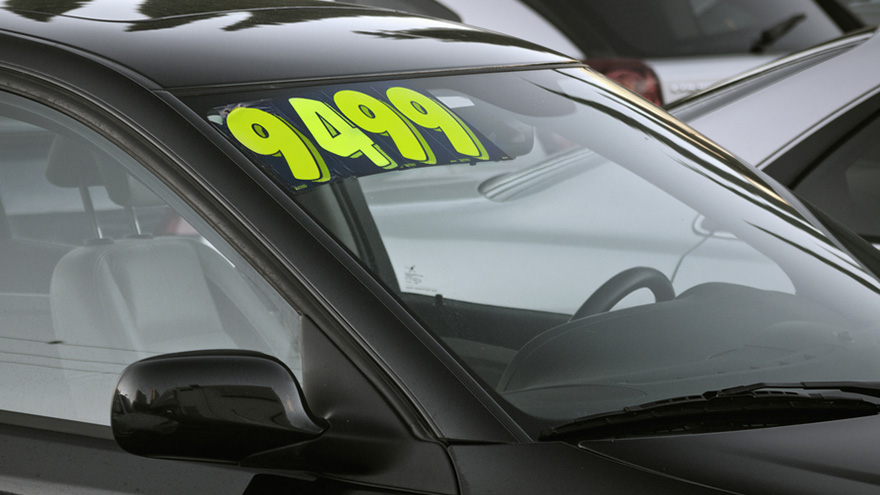Used-car prices looking ‘heck of a lot better’

Perhaps the recent hullabaloo about a potential used-car price collapse was much ado about nothing.
Retention values for 1- to 3-year-old vehicles in 2017, as calculated by Kelley Blue Book, were at 56 percent at the beginning of October, which is slightly ahead of year-ago levels (55 percent).
“The lack of normal depreciation in used-vehicle values this summer has meant that the typical curve that peaks in the spring and then declines throughout the rest of the year has only seen a moderate decline,” Cox Automotive chief economist Jonathan Smoke said in a quarterly call with analysts and the media on Oct. 6.
“Note also that 2017 didn’t see a rise in the spring similar to prior years,” he said. “This is likely a result of auction volumes peaking in the first quarter, while demand was not as brisk as usual due to delayed task refunds.
“So the year started off looking bleak, if you gauged the world through the lens of retention values,” Smoke said. “But now it looks a heck of a lot better.”
Particularly if you look at the Manheim Used Vehicle Value Index, which in September reached a fifth straight record high (134.9).
That was also up 6.3 percent year-over-year, with wholesale prices climbing 2.77 percent. It capped a quarter the company said was “one for the record books.”
‘Controversy … put to rest’
Smoke joined Cox Automotive in April to eventually replace Tom Webb, who retired at the end of June. At the time, worries about used-car prices had reached “a near-fever pitch,” Smoke recalled.
“The Manheim index wasn’t showing the same kinds of declines as what other indices that are really measures of retention values were showing,” Smoke said. “But those indices do not show used-vehicle price trends. They show retention value trends, which are a function of values relative to MSRP and represent a fixed basket of vehicles and not the whole market.
“But the whole controversy about what’s really going on should now be put to rest. Retention values have fallen from their abnormally strong peak experienced in 2014, which was a function of abnormally strong used-vehicle values prior to 2014, but also strong new-vehicle price performance, as well,” he said.
“Then throw in a fixed basket more heavily weighted to what was leased in 2014 — predominantly cars — you have the double-whammy of retention values coming back down to normal, but also falling because of consumer preference shifting away from cars to SUVs and trucks.”
Retention index growth at 5-year high; hike won’t last ‘much longer’
Black Book reported that its Used Vehicle Retention Index for September posted the largest month-over-month gain since March 2012. The index reading increased from 112.6 to 113.9, as replacement demand impact from Hurricane Harvey lingered.
The Black Book Used Vehicle Retention Index is calculated using Black Book’s published wholesale average value on 2- to 6-year-old used vehicles, as a percent of original typically equipped MSRP.
“We certainly anticipated a near-term increase in the Index in last month's report, and with the storm replacement activity kicking in we believe this activity will continue in the next month but not much longer,” said Anil Goyal, senior vice president of automotive valuation and analytics for Black Book, in the October analysis.
“We saw a nice bump in several car segments, and we also anticipate several truck segments to see increases as well, especially with the demand for service and construction vehicles. It was interesting that mainstream car segments and compact SUVs experienced the largest increase in immediate replacement demand,” Goyal continued.
In the early part of October (the week of Sept. 29 through Oct. 6), Black Book found that trucks were retaining more value than cars, but their rate of deprecation compared to the prior month was growing faster.
The week-over-week depreciation (volume-weighted) for cars was 0.4 percent. The preceding four weeks had average depreciation of 0.33 percent.
For trucks, week-over-week depreciation was 0.28 percent. It was 0.12 percent for the preceding four weeks.
Goyal also points out in that analysis, “Small and midsize cars are continuing to do well, even as the buying frenzy after the hurricanes has slowed down.”
Subcompacts were down 0.17 percent, compacts were down 0.32 percent and midsize cars were down 0.25 percent, according to Black Book.

 View The Latest Edition
View The Latest Edition

